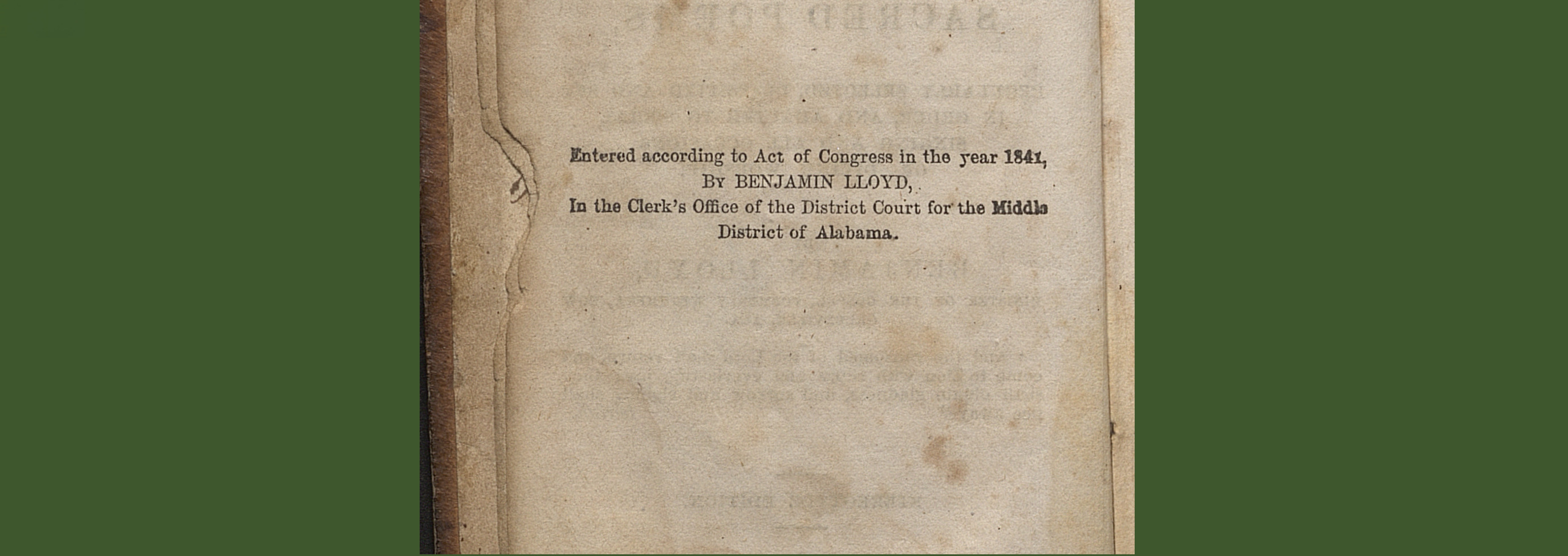
Records of singing schools and conventions attest to the flourishing of sacred song in nineteenth- and early twentieth-century Alabama, even as more established infrastructures in neighboring Georgia and Tennessee overshadowed the state’s music publishing efforts. Some particularly influential collections of sacred music would be linked to the state, if only tangentially. Primitive Hymns (1841), for example, was a text-only collection that first appeared in compiler Benjamin Lloyd’s (1804–60) home region of central Alabama. Subsequent printings were published first in Texas and later in California as Lloyd and his heirs moved west. In contrast, the four-shape tunebook The Sacred Harp (1844) was originally compiled in west Georgia and manufactured in Pennsylvania, before it became a beloved staple across Alabama, including in the southeastern Wiregrass region where local musician Wilson Marion Cooper (1850–1916) prepared a revision nearly sixty years after the book first appeared.
Publications associated with black institutions document an important era of Alabama’s sacred music publishing history. Institutions like the Calhoun Colored School (1892–1945) in rural Lowndes County or the Banks Conservatory of Music in Birmingham occasionally issued items of sacred music for their own use or for fundraising. In an era when black music-making was often reductively characterized as a folk practice, African American classical composer Harry Burleigh (1866–1949) mined Calhoun publications for use in his symphonic and choral works. Many influential Alabama-born African American composers of sacred music found publishers through the Great Migration, including William L. Dawson (1899–1990) in Philadelphia and W. C. Handy (1873–1958) in New York City.
—Erin Fulton
The Primitive Hymns
- Author: Benjamin Lloyd
- Published: 1857 (c1841)
- Publisher: For the proprietor
- Publication City: Greenville, Alabama; compiled in Wetumpka, Alabama
- Added: Jan. 28, 2020, 4:33 p.m.